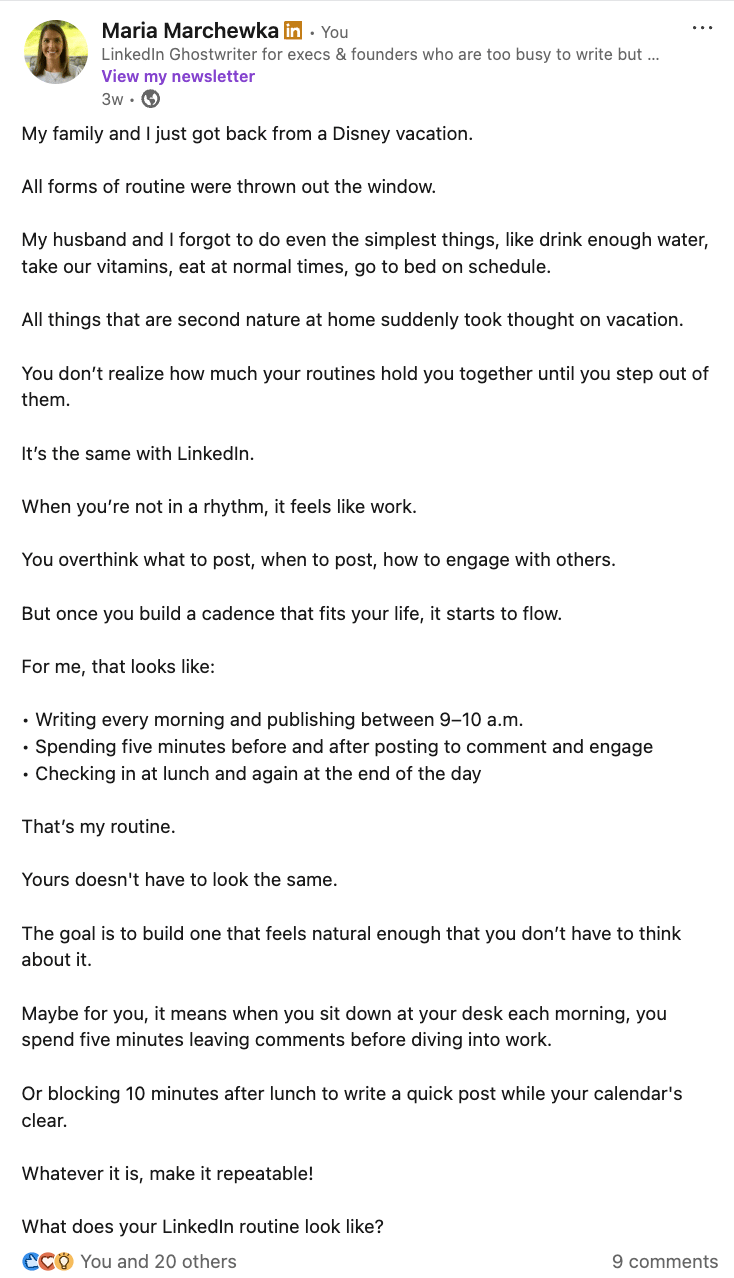Everywhere you look, the advice is the same…
Shorter is better. Keep it tight. Nobody has time to read anymore.
Except... people still read books. Long articles. Essays that stretch for pages.
So what gives?
It’s not that people don’t read. It’s that people have become more selective about what earns their time.
I love a short post. If you can say what you need to with fewer words and keep the impact, I’m all for it.
But when it comes to longer posts, the real issue isn’t the word count. It’s whether the content is interesting enough to keep someone’s attention.
Even I skim or skip posts when they’re dense or directionless…but if a post hooks me with a story or a moment that grabs me, I’m in. I’ll read every line.
And that’s great news for you.
Because longer posts can absolutely perform when done the right way.
Want to get the most out of ChatGPT?
ChatGPT is a superpower if you know how to use it correctly.
Discover how HubSpot's guide to AI can elevate both your productivity and creativity to get more things done.
Learn to automate tasks, enhance decision-making, and foster innovation with the power of AI.
Here are three ways to make your longer posts readable, engaging, and worth finishing:
1. Start with a moment. Not a lecture.
Save the thesis for academic articles.
On LinkedIn, your job is to pull people into a moment with a quote, question, insight, story, or conversation.
These openings feel human, not heavy.
When you start with a scene or a spark rather than a summary, your reader leans in and clicks “see more.”
A moment creates momentum.
If you want 11 proven ways to do this, grab my hook swipe file here. It'll show you exactly how to open with a moment instead of a thesis statement.
2. Break the scroll with micro-rewards.
When people see a wall of uninterrupted text, their brain sends a signal:
“Keep scrolling! This looks like too much work.”
But when a long post is written with rhythm, spacing, and small payoffs along the way, it becomes effortless to move through.
Think of micro-rewards as tiny moments that refresh attention:
- a sharp one-liner
- a natural pivot
- a small moment of tension
- a relatable insight
Here’s an example from one of my posts:
The setup: My Disney vacation threw off my routine.
The insight: “You don’t realize how much your routines hold you together until you step out of them.”
The pivot: “It’s the same with LinkedIn.”
Long posts feel dense when they're written like essays.
But they feel light when they're structured with clean spacing, natural pauses, and intentional pacing.
Your job isn’t to make every post a Cliff’s Notes version. Your job is to make the reading experience smooth and rewarding.
3. Make one promise and stick with it.
Have you ever talked to someone whose stories jump around like mental leapfrog?
One minute, they’re telling you about their weekend. The next second, you’re hearing about a childhood play from 30 years ago.
Don’t do that with your posts.
Before you start writing, ask yourself:
“If readers remember one thing from this post, what should it be?”
Your answer keeps your post focused. And, focus creates engagement.
Your turn
Pull up a draft you've been working on. Pick one that feels too long or one that feels off.
Read it out loud and ask yourself three questions:
1. Am I starting with a moment or a lecture?
If your opening feels flat, find a way to drop readers into a scene, ask them a question, or share a specific detail instead.
2. Where does my attention drift?
When you identify that spot, add in a micro-reward like a sharp insight, a natural pivot, something that refreshes the rhythm and gives readers a reason to keep going.
3. Am I sticking to one topic?
If you're jumping between topics, pick the strongest one and save the rest for another post.
Post length isn’t the enemy. Boring is.
PS We have plenty of seats at the table during The Lunch Break🍴, invite a friend to join us using this link.


